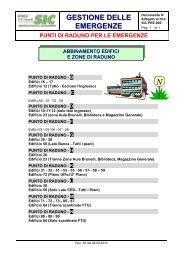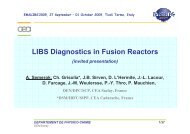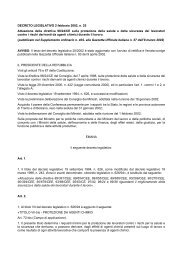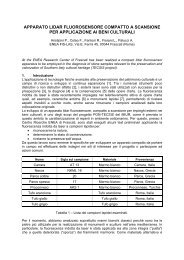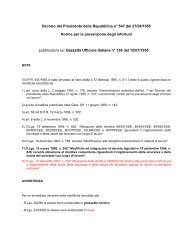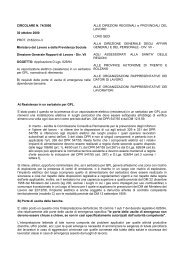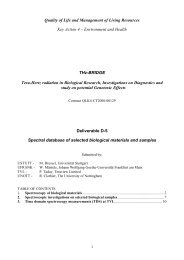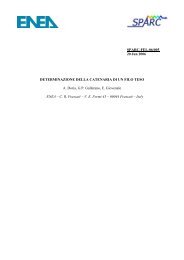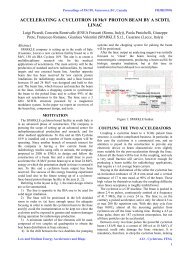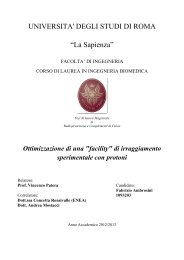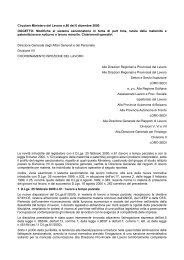Theory, Design and Tests on a Prototype Module of a Compact ...
Theory, Design and Tests on a Prototype Module of a Compact ...
Theory, Design and Tests on a Prototype Module of a Compact ...
Create successful ePaper yourself
Turn your PDF publications into a flip-book with our unique Google optimized e-Paper software.
7. MEASUREMENT OF THE WAVEGUIDE-MODULE COUPLING 95<br />
Figure 5.26. Coupling through an iris. The cavity is<br />
referred to the primary.<br />
For cavities with high quality factor ω ≈ ω0 <str<strong>on</strong>g>and</str<strong>on</strong>g> then, equati<strong>on</strong> (5.22)<br />
can be written as<br />
Zaa ′<br />
= j<br />
Z0<br />
X1 β1<br />
ω − ω0<br />
+ , δ = , (5.23)<br />
Z0 1 + j2Q0δ ω0<br />
<str<strong>on</strong>g>and</str<strong>on</strong>g> the quantity δ is called the frequency tuning parameter. The sec<strong>on</strong>d<br />
term <strong>of</strong> equati<strong>on</strong> (5.23) corresp<strong>on</strong>ds to a circle <strong>on</strong> the complex<br />
impedance plane, where the first term expresses the effect <strong>of</strong> the selfreactance<br />
<strong>of</strong> the coupling system.<br />
We can choose the reference planes al<strong>on</strong>g the transmissi<strong>on</strong> line at<br />
which the first term disappears <str<strong>on</strong>g>and</str<strong>on</strong>g> this series <strong>of</strong> positi<strong>on</strong>s are called<br />
the detuned short positi<strong>on</strong>s. Let the terminals b − b ′ be selected at a<br />
distance l away from the terminals a − a ′ . The impedance Zaa ′ can be<br />
transformed in<br />
Zbb ′<br />
Z0<br />
= Zaa ′ + jZ0 tan αl<br />
Z0 + jZaa ′ tan αl,<br />
(5.24)<br />
where α is the propagati<strong>on</strong> number. The locati<strong>on</strong> <strong>of</strong> terminals b − b ′<br />
can be chosen so that the impedance at terminals b − b ′ becomes zero<br />
when the cavity is detuned. This means that the impedance locus is<br />
symmetric respect to the real axis <strong>on</strong> the complex impedance plane,<br />
since the far points out <strong>of</strong> res<strong>on</strong>ance are near the point where R = ∞.<br />
7.4. RF procedure. In this secti<strong>on</strong> we derive a RF measurement<br />
recipe that implies <strong>on</strong>ly the use <strong>of</strong> a Network Analyzer. The used<br />
functi<strong>on</strong>s are so general that each specific model should have them.<br />
• First, we assumed that the source <strong>of</strong> our cavity had an internal<br />
impedance Z0 equal to the characteristic <strong>on</strong>e <strong>of</strong> the transmissi<strong>on</strong><br />
line used to feed the cavity in the previous relati<strong>on</strong>s. This<br />
implies that the network analyzer cables <str<strong>on</strong>g>and</str<strong>on</strong>g> the other tools<br />
used to feed the cavity right <strong>on</strong> to the coupling mechanism<br />
should be perfectly matched too.<br />
• Then, we c<strong>on</strong>sider the measurement <strong>of</strong> reflecti<strong>on</strong> coefficient S11<br />
<str<strong>on</strong>g>and</str<strong>on</strong>g> we use the Smith chart visualizati<strong>on</strong> <strong>of</strong> it. If the frequency



